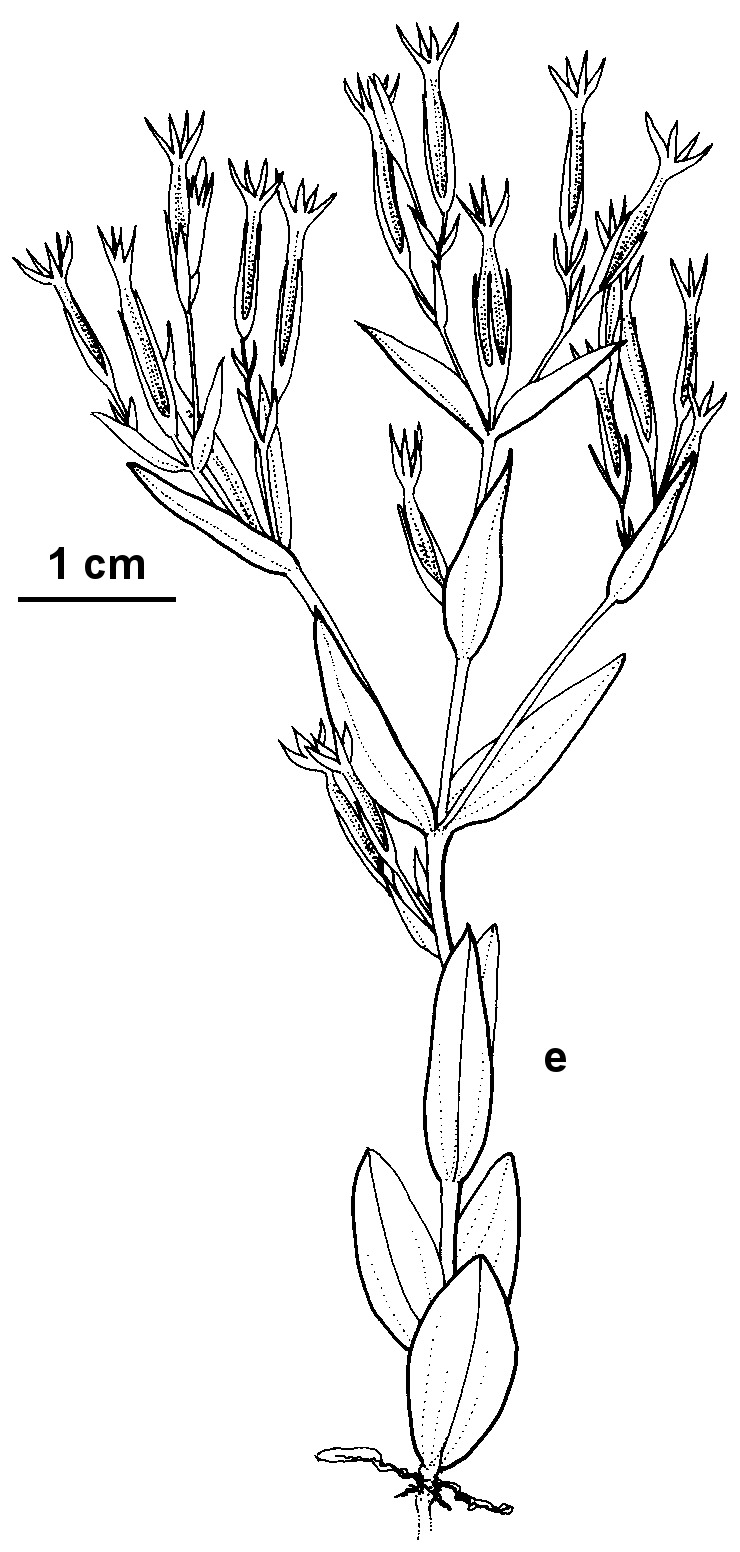Centaurium pulchellum
(Sw.) Druce Lesser CentauryErect annual, 5–25 cm high. Main stem(s) with 2–4 internodes below lowermost branch. Basal leaves absent at flowering; stem leaves ovate to lanceolate, 5–15 mm long, 2–10 mm wide, smaller toward base, acute. Inflorescence a rather open dichasium with branches spreading from main axis at up to 45°. Flowers on pedicels 1–5(–10) mm long; calyx-lobes 4–7 mm long; corolla bright rose-pink, tube 6–10 mm long, lobes 3–4.5 mm long; anthers mostly 1–1.2 mm long; ovary c. 7 mm long. Capsule c. 8–10 mm long; seeds 0.15–0.25 mm diam., reticulate, pale to reddish-brown. Flowers Oct.–Feb.
Wim, GleP, VVP, VRiv, OtP, CVU, GGr, OtR, Strz. Also naturalised WA, SA. Native from the Mediterranean northwards and eastwards to Scandinavia and China respectively. Apparently rare in Australia (but possibly overlooked for the very similar C. tenuiflorum) and known in Victoria by a handful of collections from the south-west of the state (e.g. Mt Arapiles, Vectis, Edenhope, Dergholm).
Native from the Mediterranean region northwards to Scandinavia and eastwards to China.
Walsh, N.G. (1999). Gentianaceae. In: Walsh, N.G.; Entwisle, T.J., Flora of Victoria Vol. 4, Cornaceae to Asteraceae, pp. 310–321. Inkata Press, Melbourne.
 Spinning
Spinning



